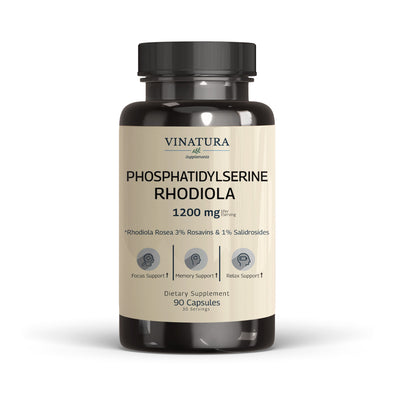
Key Signs of Aging at the Cellular Level
Aging begins at the cellular level, where cells gradually lose function, accumulate damage and change in size and structure. Key signs include shorter telomeres, buildup of waste and lipids, reduced membrane flexibility and abnormal cell growth.
These cellular changes contribute to organ decline, driving the natural aging process and raising the risk of age-related diseases. Understanding these early cellular changes can help guide lifestyle choices and interventions to support long-term health.
Before exploring further, please read the disclaimer located at the end of this webpage.
Key Takeaways
- Aging at the cellular level involves reduced function, telomere shortening, waste accumulation, and changes like atrophy or hypertrophy.
- Aged cells can develop abnormal shapes and functions, potentially leading to precancerous changes or tumor formation.
- DNA damage, protein errors, and oxidative stress accelerate aging, impair organ function, and increase the risk of age-related diseases.
What Is the Cellular Level of Aging?
The cellular level of aging refers to the biological changes that occur inside cells as humans grow older. This includes limits on cell division (telomere shortening), DNA damage, reduced repair capacity and changes in metabolism.
These changes accumulate, causing tissues and organs to deteriorate, forming the natural aging process.
What Are the Signs of Aging at the Cellular Level?
Signs of aging at the cellular level can be seen through the following key points:

Decline in Cellular Function
Many cells function poorly or abnormally, and their ability to detect and repair DNA damage declines, leading to genomic instability.
This reduces tissue regeneration capacity and makes it easier for faulty proteins to form due to errors in synthesis and folding, disrupting cellular activities and increasing intracellular stress.
These changes impair cellular homeostasis, making organs more vulnerable and increasing the risk of age-related diseases [1,2].
Cell Enlargement and Reduced Division
As we age, cells often enlarge but divide less frequently.
The main reason is the gradual shortening of telomeres – the “caps” at the ends of chromosomes. When telomeres become too short, cells enter a state called “senescence.” These cells are also known as “zombie cells” because they no longer divide but continue to release inflammatory substances [3].
Telomere shortening is influenced by genetic factors, the environment and lifestyle; also considered a hallmark of cellular aging. When accumulated in large amounts, it can lead to chronic inflammation and impaired tissue function [4].
Accumulation of Pigments and Fats in Cells
The accumulation of pigments and fats is both a sign and a cause of cellular aging.
Aging cells contain high amounts of lipids and lipofuscin – a yellow-brown pigment formed from cellular waste that is not fully broken down.
Externally, these contribute to dull skin, brown spots, and yellowish tones. In terms of health, lipofuscin can damage the retina, being associated with age-related macular degeneration, while also increasing oxidative stress and impairing tissue function [5, 6].

Waste Accumulation in Tissues
This accumulation negatively affects major organ systems, reducing cardiovascular efficiency, impairing respiratory function and weakening neurological health [3, 7].
Over time, as waste and byproducts of metabolism build up in tissues, the tissues become stiff and lose elasticity.
Within cells, “waste,” such as damaged proteins or debris, gradually accumulates because the cell’s self-cleaning system becomes less effective.
Over time, this buildup causes inflammation, increases cellular stress, and reduces tissue function, thereby accelerating aging in multiple organ systems and contributing to age-related diseases (Poulose & Raju, 2014).
Changes in the Cell Membrane
With aging, cell membranes become less flexible, making nutrient absorption and waste removal less efficient. This weakens cellular metabolism and leads to reduced energy (ATP) production for the cell (Das, 2021).
The cause is linked to mitochondrial dysfunction, as mitochondria are the cell’s “powerhouse” and interact closely with the cell membrane [9].
In addition, the protein and lipid composition of the membrane also changes with age, affecting cellular communication, signal transmission and overall cell stability (Itakura et al., 2018).
Morphological and Quantitative Changes in Cells During Aging
The signs of aging at the cellular level are related to changes in cell morphology and number, including [11, 12]:
-
Atrophy: Cells shrink, reducing tissue and organ mass. This is commonly seen in skeletal muscles, the heart, brain, and reproductive organs, leading to decreased function.
-
Hypertrophy: Some cells enlarge to compensate for the loss of other cells, temporarily maintain tissue mass but may cause imbalance and place stress on the tissue.
-
Hyperplasia: Some tissues increase the number of cells through rapid division, often occurring in the skin, liver, intestinal mucosa and bone marrow.
These changes demonstrate how cells and tissues respond to stress factors during aging, while also contributing to the characteristic signs of old age and declining organ function.
Cell Dysplasia (Abnormal Development)

Cell dysplasia is a condition in which cells develop abnormally, with changes in shape, size and structure.
It is often considered a precancerous sign because the cells exhibit disorganized structure and morphology. Dysplasia commonly occurs in tissues such as the cervix or the respiratory tract and can progress to cancer if not detected and managed in time (Hou et al., 2023).
Cell Neoplasia (Tumor Formation)
Cellular neoplasia is the process in which certain cells develop into tumors, which can be benign (non-cancerous) or malignant (cancerous). This transformation is mainly associated with:
-
The accumulation of DNA mutations, which disrupt the control of cell growth and division.
-
The loss of mechanisms that regulate cell division, causing cells to multiply uncontrollably.
-
Neoplastic cells often acquire additional traits that support tumor growth, such as evasion of cell death, sustained angiogenesis and tissue invasion.
Tumor formation is a multi-step process influenced by genetic, epigenetic and environmental factors, leading to the transition from normal cells to cancer cells [14].
Uncontrolled cell proliferation combined with accumulated DNA damage forms the basis of many types of cancer and is considered a typical feature of aging-related cellular pathology.
Epigenetic Changes and Inflammaging
Epigenetic changes and inflammation are important signs of aging at the cellular level. The combination of these two factors accelerates the aging process, reduces the ability to maintain balance and respond to stress, and contributes to the development of age-related diseases.
They are adjustments in how genes function without altering the DNA sequence. These changes affect whether genes are “turned on” or “turned off,” influencing hormone regulation, immunity, and cellular function.
As we age, epigenetic patterns become disrupted, leading to abnormal gene expression and many age-related diseases (Pal & Tyler, 2016).
Meanwhile, inflammaging is a low-grade chronic inflammation that appears with age. It weakens tissues and cells, reduces functional capacity and increases the risk of chronic diseases [16].
Frequently Asked Questions
1. What Are Zombie Cells?
“Zombie cells” are damaged or aged cells that no longer divide but do not fully die.
When we are young, the immune system can remove them, but as we age, the number of zombie cells accumulates in the body and releases inflammatory substances, contributing to age-related diseases such as arthritis, Alzheimer’s, or cancer (Camilla et al., 2021).
2. How Can You Reverse Cellular Aging?
To naturally slow down and potentially reverse cellular aging, people should maintain a healthy lifestyle, including a balanced diet (with anti-inflammatory and antioxidant-rich foods), regular exercise and sufficient sleep.
On Reddit, many women aged 45-46 have noticed rapid facial aging, including sagging skin, wrinkles and the appearance of jowls.*
According to shared experiences, slowing this process may involve skincare routines, lifestyle adjustments (diet, exercise, adequate sleep, red light therapy, gua sha, etc.) and considering hormone therapy. Non-surgical cosmetic procedures like thread lifts are often reported as less effective.*
3. Where Do the First Signs of Aging Appear?
The first signs of aging usually appear on the face, especially around the eyes, mouth and forehead; due to frequent facial muscle movement and sun exposure, which cause wrinkles.
The neck and hands also show aging signs early because the skin is thin, less elastic, and often exposed. Additionally, dull, dry skin and brown spots may appear in these areas
Other organs, such as ovaries, bones, and muscles, also show early aging through reduced fertility, osteoporosis and muscle loss [18].
4. What Causes Cellular Inflammation in Aging?
Inflammaging occurs when the body accumulates aged cells, mitochondrial dysfunction, gut microbiota imbalance and oxidative stress.
This activates the immune system, increasing inflammatory factors (such as IL-6 and TNF-α), creating a chronic inflammation loop that damages tissues and weakens cells [19].
5. How Do You Know if You Are Aging Too Fast?
You may be aging faster than normal if you notice signs such as wrinkles, premature thin skin, prolonged fatigue, memory or concentration decline, reduced strength and mobility, unusual hair graying or loss, chronic inflammation, or increased joint pain.
These signs are not only caused by aging but may also reflect underlying health issues or environmental impacts. Lifestyle factors such as poor diet, smoking, chronic stress, and lack of exercise significantly contribute to accelerated aging.
Conclusion
By understanding the key signs of cellular aging, individuals can better listen to and care for their bodies with a more proactive mindset.
Early recognition of these changes also allows us to adjust daily habits and lifestyle choices, helping to maintain long-term health and reduce the risk of age-related diseases.
Testimonial Disclaimer
*The testimonials presented on this website are provided by individuals based on their personal experiences with our products. These testimonials represent individual opinions and experiences, which may not be typical or applicable to all users of our products. Results may vary depending on a variety of factors, including individual health, lifestyle, and adherence to product usage instructions.References
- [1] Guralnik, J. M., Feige, J. N., Singh, A., & Fielding, R. A. (2021). Nutritional Mediators of Cellular Decline and Mitochondrial Dysfunction in Older Adults. Geriatrics, 6(2), 37–37. https://doi.org/10.3390/geriatrics6020037
- [2] Goyani, P., Christodoulou, R., & Vassiliou, E. (2024). Immunosenescence: Aging and Immune System Decline. Vaccines, 12(12), 1314. https://doi.org/10.3390/vaccines12121314
- [3] Khan, S. S., Singer, B. D., & Vaughan, D. E. (2017). Molecular and physiological manifestations and measurement of aging in humans. Aging Cell, 16(4), 624–633. https://doi.org/10.1111/acel.12601
- [4] Fathi, E., Hojjatollah Nozad Charoudeh, Zohreh Sanaat, & Raheleh Farahzadi. (2019). Telomere shortening as a hallmark of stem cell senescence. Stem Cell Investigation, 6, 7–7. https://doi.org/10.21037/sci.2019.02.04
- [5] Baldensperger, T., Jung, T., Heinze, T., Schwerdtle, T., Höhn, A., & Grune, T. (2024). Age pigment lipofuscin causes oxidative stress, lysosomal dysfunction, and pyroptotic cell death. bioRxiv. https://doi.org/10.1101/2024.03.25.586520v1
- [6] Ilie, O.-D., Alin Ciobica, Riga, S., Nitasha Dhunna, McKenna, J., Mavroudis, I., Bogdan Doroftei, Ciobanu, A.-M., & Riga, D. (2020). Mini-Review on Lipofuscin and Aging: Focusing on The Molecular Interface, The Biological Recycling Mechanism, Oxidative Stress, and The Gut-Brain Axis Functionality. Medicina, 56(11), 626–626. https://doi.org/10.3390/medicina56110626
- [7] Poulose, N., & Raju, R. (2014). Aging and Injury: Alterations in Cellular Energetics and Organ Function. Aging and Disease. https://doi.org/10.14336/ad.2014.0500101
- [8] Das, U. N. (2021). “Cell Membrane Theory of Senescence” and the Role of Bioactive Lipids in Aging, and Aging Associated Diseases and Their Therapeutic Implications. Biomolecules, 11(2), 241–241. https://doi.org/10.3390/biom11020241
- [9] Wang, Q., Yuan, Y., Liu, J., Li, C., & Jiang, X. (2024). The role of mitochondria in aging, cell death, and tumor immunity. Frontiers in Immunology, 15. https://doi.org/10.3389/fimmu.2024.1520072
- [10] Itakura, Y., Sasaki, N., & Toyoda, M. (2018). Qualitative and quantitative alterations in intracellular and membrane glycoproteins maintain the balance between cellular senescence and human aging. Aging, 10(8), 2190–2208. https://doi.org/10.18632/aging.101540
- [11] Goto, K., Tanaka, K., & Waki, H. (2018). Special Issue “Aging and Skeletal Muscle Atrophy.” The Journal of Physical Fitness and Sports Medicine, 7(4), 203–203. https://doi.org/10.7600/jpfsm.7.203
- [12] Hidayat, R., & Catherine, N. (2023). Mechanisms of Cellular Adaptation and Change: A Narrative Literature Review. Open Access Indonesian Journal of Medical Reviews, 3(2), 382–389. https://doi.org/10.37275/oaijmr.v3i2.298
- [13] Hou, W., Song, S., Duan, X., Hou, W., Shi, Z., Ma, L., Niu, J., & Jin, M. (2023). Morphological Characteristics of Various Cells in Esophageal Squamous Dysplasia: Extremely Wide Morphological Spectrum. International Journal of Surgical Pathology, 32(4), 692–707. https://doi.org/10.1177/10668969231188906
- [14] Zhang, S., Xiao, X., Yi, Y., Wang, X., Zhu, L., Shen, Y., Lin, D., & Wu, C. (2024). Tumor initiation and early tumorigenesis: molecular mechanisms and interventional targets. Signal Transduction and Targeted Therapy, 9(1). https://doi.org/10.1038/s41392-024-01848-7
- [15] Pal, S., & Tyler, J. K. (2016). Epigenetics and aging. Science Advances, 2(7). https://doi.org/10.1126/sciadv.1600584
- [16] Andonian, B. J., Hippensteel, J. A., Abuabara, K., Boyle, E. M., Colbert, J. F., Devinney, M. J., Faye, A. S., Kochar, B., Lee, J., Litke, R., Nair, D., Sattui, S. E., Anoop Sheshadri, Sherman, A. N., Singh, N., Zhang, Y., & LaHue, S. C. (2024). Inflammation and aging-related disease: A transdisciplinary inflammaging framework. GeroScience. https://doi.org/10.1007/s11357-024-01364-0
- [17] Camilla, Pessolano, E., Perretti, M., & Montero-Melendez, T. (2021). Senescence under appraisal: hopes and challenges revisited. Cellular and Molecular Life Sciences, 78(7), 3333–3354. https://doi.org/10.1007/s00018-020-03746-x
- [18] Dodig, S., Čepelak, I., & Pavić, I. (2019). Hallmarks of senescence and aging. Biochemia Medica, 29(3), 483–497. https://doi.org/10.11613/bm.2019.030501
- [19] Molecules and Cells | Journal | ScienceDirect.com by Elsevier. (2025). Sciencedirect.com. https://www.sciencedirect.com/journal/molecules-and-cells
Author

Product Disclaimer
Including an ingredient or study does not evaluate, endorse, or recommend any Vinatura product or any third-party product. Some ingredients discussed may not be used in any Vinatura product.
The content of the articles has not been evaluated by the Food and Drug Administration (FDA) and is not intended to promote or endorse any specific product. Any products sold on this website are not intended to diagnose, treat, cure, or prevent any disease.
Opinions and Endorsements
Any claims, statements, or opinions expressed in the articles are those of the author(s) and do not necessarily reflect the views or opinions of the manufacturers of the dietary supplement products. The products sold on this website are separate from the content of the articles and are not directly endorsed or associated with the information presented here.
Liability Disclaimer
The author(s) of the articles, website, and manufacturers of the dietary supplement products do not assume any liability for any potential consequences arising from the use of the information provided in the articles. Ingredient effects, dosages, and safety vary by individual, formulation, and context; some ingredients interact with medications or may be unsuitable during pregnancy or lactation. It is recommended that individuals consult with a qualified healthcare professional before making any dietary or lifestyle changes, including the use of dietary supplements.
Product Usage
Please refer to the product labels and packaging for specific usage instructions and guidelines for the dietary supplement products sold on this website.
Customer Support
For any concerns or questions regarding the dietary supplement products, please contact our customer support team, who will be more than happy to assist you.





Leave a Comment
Be the first to comment.
What do you think?